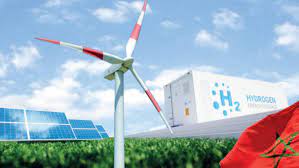
seventeen years after Morocco announced its plan to rely on renewable energies for electricity production,the country has offered a model of hope for countries who are burdened by fossil fuel,thanks to large scale solar,wind,and green hydrogen projects launched under the leadership of King Mohammed VI.
Morocco has increased its renewable energy target from 42% to 52% of installed capacity by 2030,as it continues to stand as an attractive destination for investors in clean energy,building on its propitious investment climate and legislative framework.
So far,Morocco has already reached the 45% milestone and many observers expect the country to be ahead of schedule in surpassing the 52% with the current pace of investment flows.
Morocco was ranked the eighth largest recipient of financial flows in renewable energy,according to a recent renewable energy agency report.
In May this year,Morocco’s water and electricity utility ONEE,renewable energy firm Nareva and UAE leading energy company TAQA,signed a deal worth 14 billion dollars to develop desalination by clean energy,along with energy transition projects.
The investments have been ushered following a visit by King Mohammed VI to the UAE in 2023,during which Morocco and the Emirates agreed to step up cooperation.
Home to the world’s largest CSP solar farm in Ouarzazate,Morocco plans to expand investments in solar and wind energy to increase capacity to 20GW,as it also prepares for large-scale green hydrogen investments.
In June 2025,Morocco selected six major investment consortia to lead seven large-scale green hydrogen projects as part of its national strategy. These projects,located across the southern provinces of Guelmim-Oued Noun,Laayoune-Sakia El Hamra,and Dakhla-Oued Eddahab,are expected to generate up to 20 GW of renewable energy and 10 GW of electrolysis capacity.
The initiative aims to produce around 8 million tons of green hydrogen derivatives,including ammonia,synthetic fuels,and green steel. The Moroccan government allocated 300,000 hectares of land in the first phase,with a total of 1 million hectares identified for future development.
In the same vein,Morocco’s largest companies,including OCP,prepare for carbon neutrality. OCP said all industrial processes will use renewable energy by 2027.
Morocco is also developing a gas plan including the setting up of a floating gas terminal in Nador West Med,besides promoting drills offshore and onshore,to meet the growing needs of its industrial sector.
United News - unews.co.za